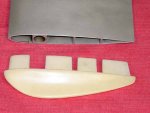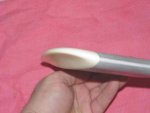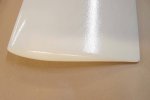I'm slow Dennis- it wasn't obvious to me how your analogy about a column of air and intestinal distress related to each other, much less to SnoBird's contention that a rotor can function as a pump and that this, along with all other losses, contributes to less than ideal performance. It's a long lasting fart that carries whatever weight it does; sounded to me like he was agreeing with you and adding yet another loss that you hadn't. Some volume of air would move through the blade and it would do what it does and it isn't clear to me that it's negligable. Not your job, no grief.
This thread starts with a request to estimate the efficiency that could be gained by adding some sort of (one assumes) aerodynamically efficient end cap. You pointed out several factors such as induced drag and (rightly) pointed out that (theoretically) you couldn't pick a worse place to apply undesired forces on the end of a free beam because of the length of the moment arm.
Then he pointed out that he was trying to quantify the improvement and cited reports that compared both blunt end vs theoretically wonderful caps only to find about 3% difference- I read that as "but what's the math?"
And the result of the math as documented basically boils down to a fudge factor developed back in the 20's based on blade count. The efficiency calculation becomes one where you create a ratio of the ideal rotor and the estimated one using this fudge factor to calculate disk loading.
Just as small undesired control forces are greatly magnified at the end of the rotor, so too is radius to disk loading. For steady state flight the difference between blunt ends or practically perfect is negligible .. add an inch to the radius of the rotor and you've dealt with it.
That said, for a gyroplane the motor effectively drives the rotor through a pneumatic transmission so even small losses are magnified. At a gut level I'd tend to agree with the basic thrust of what you're saying (I think) which would be something along the line of "you should pretty much always do what you can and if you can make it look nice too why wouldn't you?"
Which didn't seem to match your response to SnoBird who was agreeing with you and adding another contributing effect that gets addressed by end caps, blunt or curvy. Like anything deciding what really matters most requires quantification ... if you don't have the equipment to measure it empirically or the math to describe it then it ends up being like describing how a chili dog tastes to somebody from another country.



